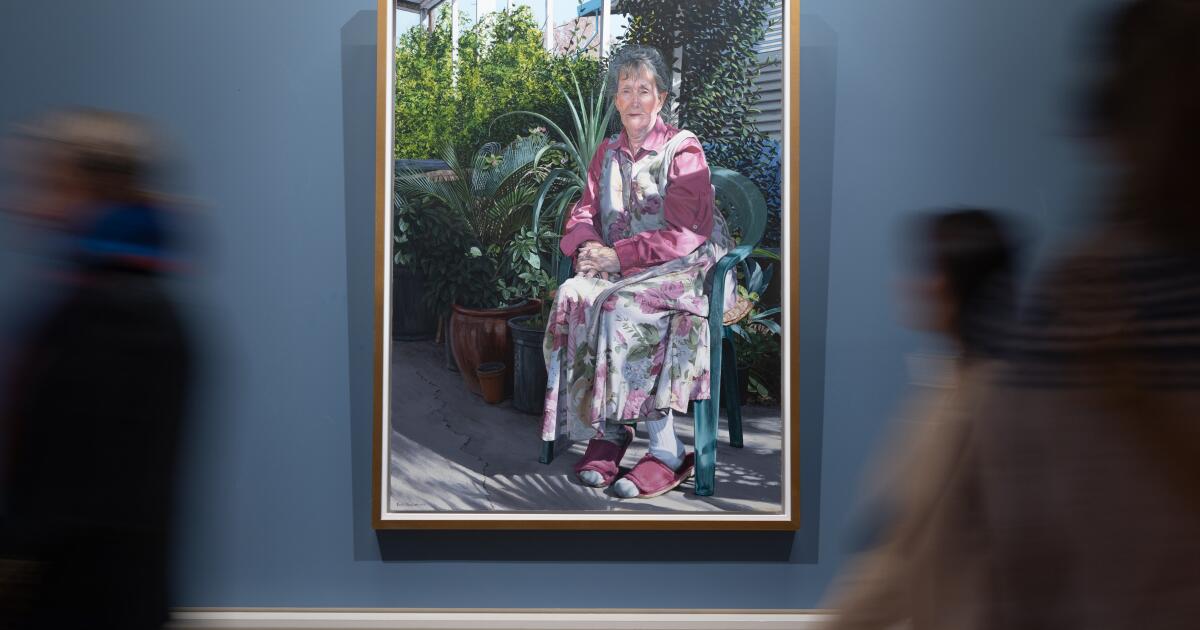Hanging from a wall in the National Gallery of Ireland is a photorealistic portrait of a stoic, gray-haired woman wearing a fuchsia shirt and slippers with a dress adorned with fuchsia flowers.
She sits in a green plastic chair on a cracked-stone porch outside a mobile home in Riverside, with palm and orange trees in the background and a pale blue sky above.
It’s a serene, Southern California scene in the halls of Dublin.
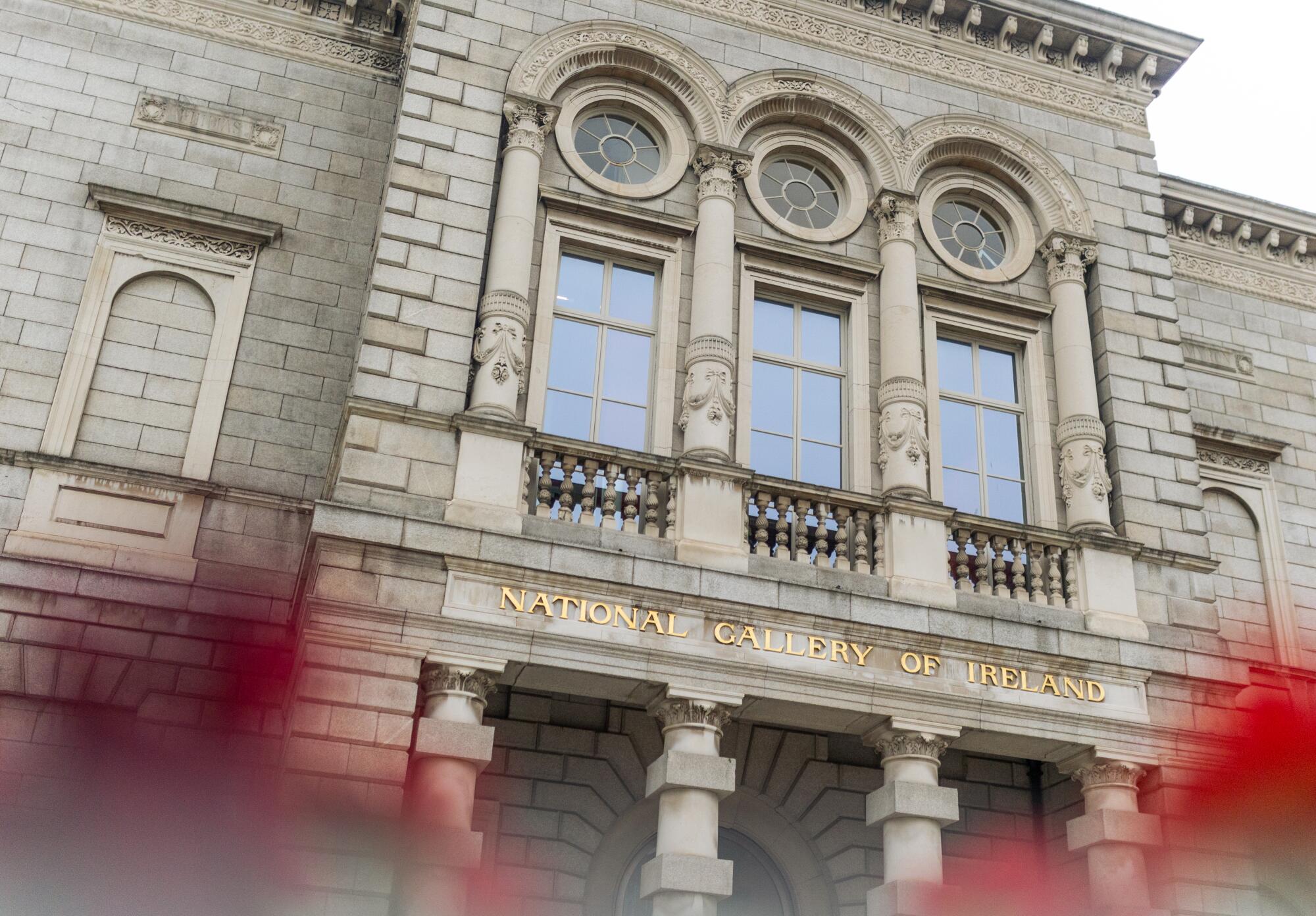
The exterior of the National Gallery of Ireland, where a portrait of Annie Murphy went on display in December.
(Molly Keane / For The Times)
But who is this woman whose portrait was installed at the gallery in December, next to a photograph of legendary Irish singer Sinéad O’Connor? Her name is Annie Murphy, a woman unknown by almost all of her neighbors and described by her own son as “penniless.”
Yet thousands of miles away, across the Atlantic Ocean, Annie Murphy is a household name, her story a turning point in the country’s history. Three decades ago, she took on the Catholic Church when she revealed the affair she’d had with a celebrated Irish bishop — and the son he’d fathered.
Her incendiary story touched off heated debates in Ireland in an era long before #MeToo and before allegations of sexual impropriety against the church were commonplace.
“In terms of the shock it had on the Irish psyche, it was almost like the JFK assassination,” said John Cunningham, a history professor at the University of Galway.
The shock was triggered, in part, by her explicit memoir, which revealed the bishop’s secret and recounted their first kiss.
“What stunned me was the realization that he had done this before,” she wrote. “No one could kiss like that without practice.”
The story goes like this: Murphy was 25 and mid-divorce following an unhappy marriage and a miscarriage when she flew to Ireland to start fresh.
She was picked up at the airport by the then-bishop of Kerry, Eamonn Casey, who was her second cousin once removed. Murphy, an American from Connecticut, went to live at the bishop’s oceanfront home, called the Red Cliff House, in County Kerry.
No one could kiss like that without practice.
— Annie Murphy, on Bishop Eamonn Casey
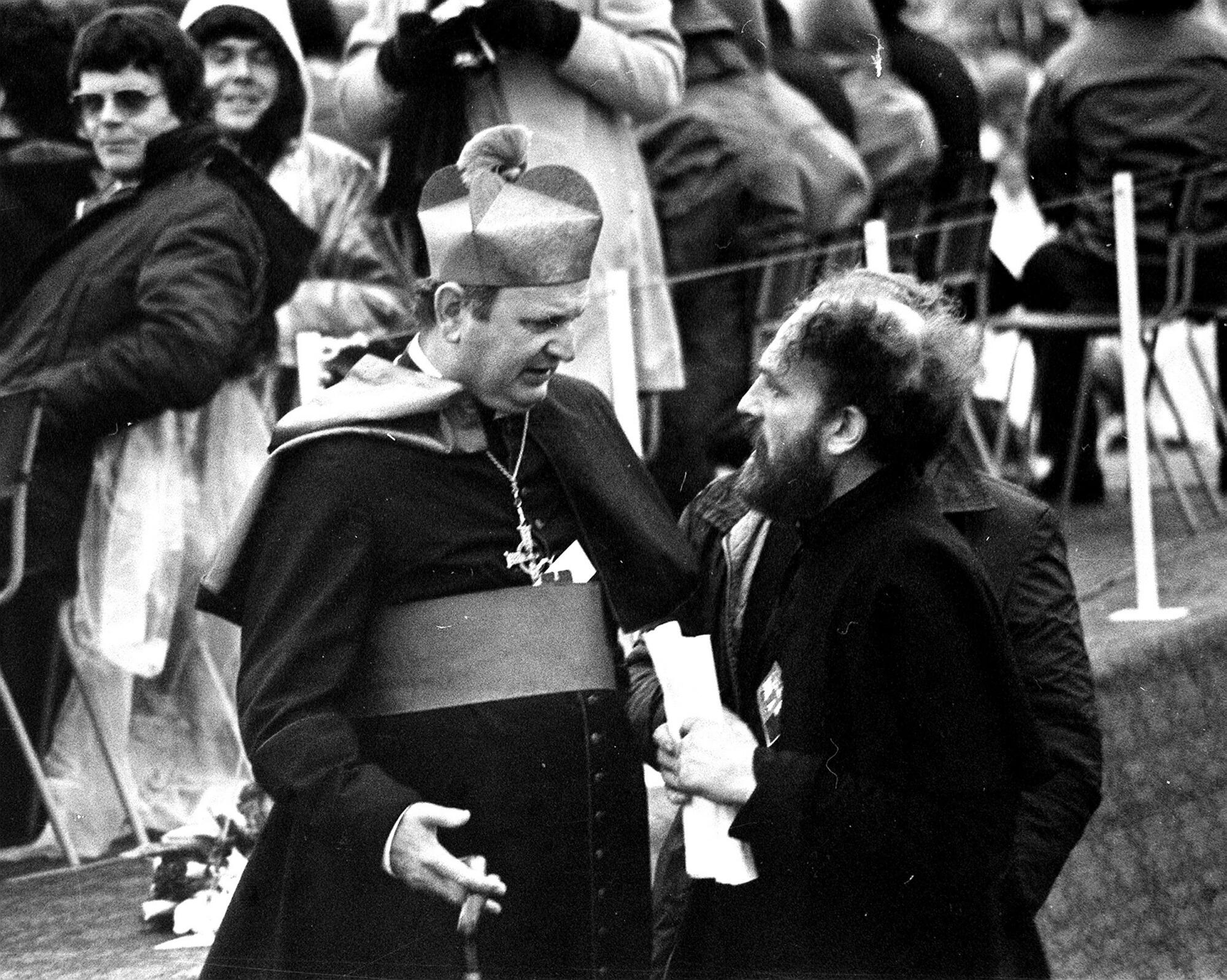
Bishop Eamon Casey, left, speaks with a priest at a youth Mass in Galway during Pope John Paul II’s visit to Ireland in 1979.
(Independent News and Media / Getty Images)
Casey was an influential clergyman, outspoken and jocular, as comfortable holding forth on political issues as he was on the pastoral needs of parishes under his purview. Whether campaigning to end poverty in Ireland or refusing to meet with President Reagan over Reagan’s policies in Central America, Casey often made headlines in Ireland and abroad.
He also was known for his indulgence in fine wines, expensive foods, travel abroad and fast cars that he could whip around his diocese at breakneck speeds. His speeding was so well known it inspired folk songs about the danger Casey-driven cars posed to Kerry sheep dogs. He even once picked up a ticket in London for drunk driving.
He was a captivating speaker and a forceful presence.
“His smile was enchanting, the feel of his hand warm and gentle,” Murphy wrote in her memoir. “This was for me the strangest thing in an already strange existence. … He certainly had charm.”
She fell in love with the bishop nearly immediately after arriving in Ireland in 1973. Casey, 21 years her senior at age 46, was equally smitten with the young woman he had welcomed into his home.
In her book, Murphy recounted their first kiss, when the bishop slipped into her room late at night.
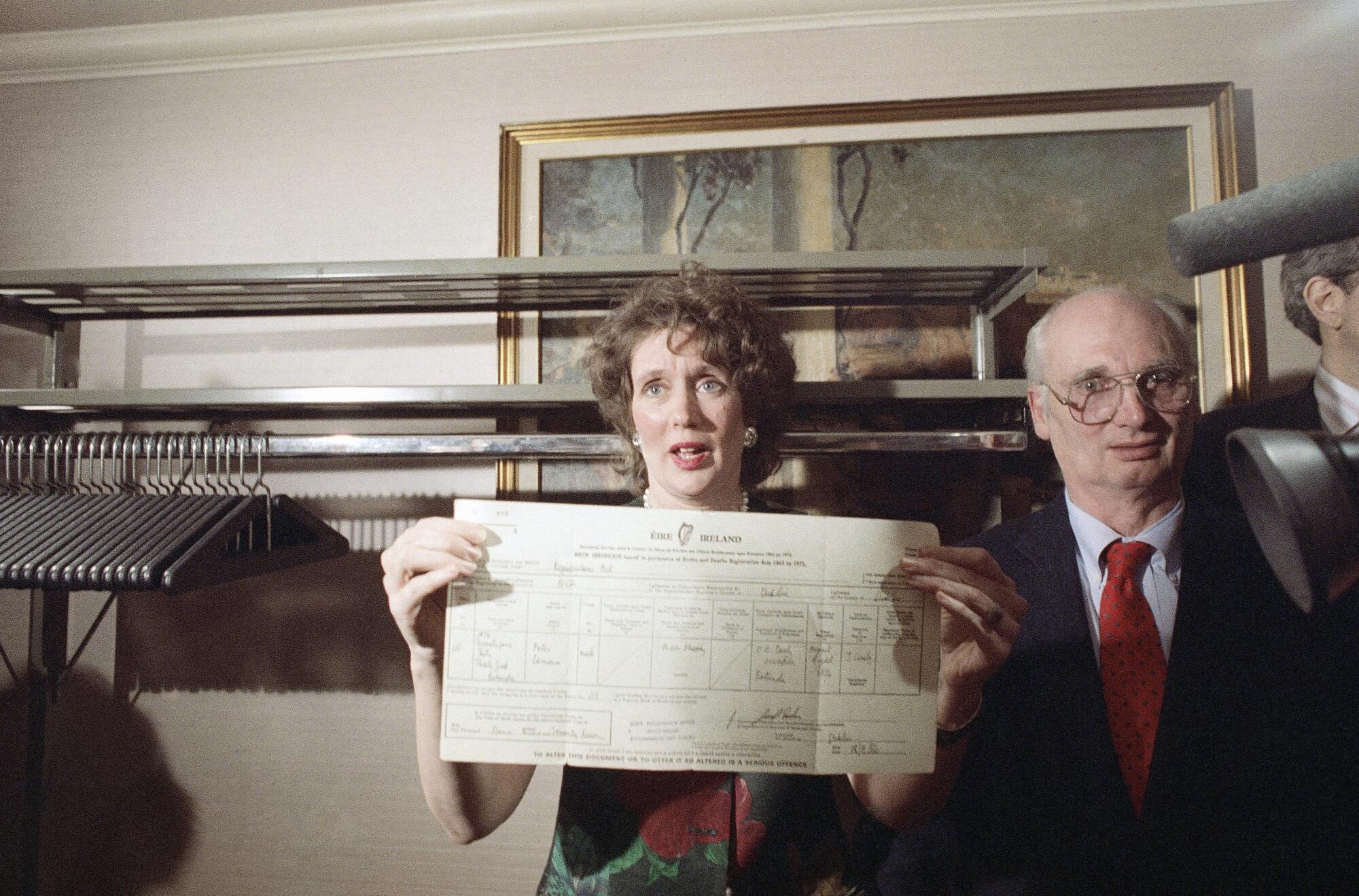
Annie Murphy holds up her son’s birth certificate following a news conference in New York in 1992, the year she revealed her son had been fathered by Irish Bishop Eamonn Casey. At right is her longtime companion, Arthur Pennell.
(Ed Bailey / Associated Press)
Murphy was tormented at the beginning of the relationship, fearing that Casey would give her up due to his religious calling. But Casey told her he’d confessed and would continue their relationship.
“If God were here, He would approve of what I am doing,” Casey told Murphy, according to her book.
Casey, who valued his reputation, told her they had to keep their relationship a secret, she wrote. Even if she wanted to scream their love from the rooftops, she couldn’t.
Everything started to change when she became pregnant. The bishop wanted her to put the baby up for adoption, but she decided to keep the child. Eighteen months after the affair started, it was over and she moved back to the United States with her infant son, christened Peter, in 1974.
For the next nearly two decades, Casey made covert payments to Murphy to support their son. But once Peter became a teen, she wanted Casey to play a larger role in the boy’s life. The bishop, who represented Galway and Kilmacduagh, refused to do so. In 1990, Murphy filed a paternity suit against Casey.
The last straw came in 1992, when Murphy’s romantic partner at the time, Arthur Pennell, confronted the bishop in person in Ireland, saying that Peter wanted to spend time with him.
“Casey told Arthur something like, ‘Annie was a whore who slept with the whole town.’ He said, ‘He’s not my kid,’ ” said Peter Murphy, who heard the story from Pennell before Pennell died. “Arthur decided, ‘That’s it, I’m taking you down.’ ”
Pennell and Murphy contacted the Irish Times in 1992. It had been two years since Murphy had quietly sued Casey in New York.
The bishop, through an intermediary in the states, paid nearly $100,000 to Murphy using diocesan funds as part of the suit, but had not admitted paternity of Peter in the case, according to Conor O’Clery, a reporter for the Irish Times. That was on top of the $275 he sent each month for the first 15 years of Peter’s life.
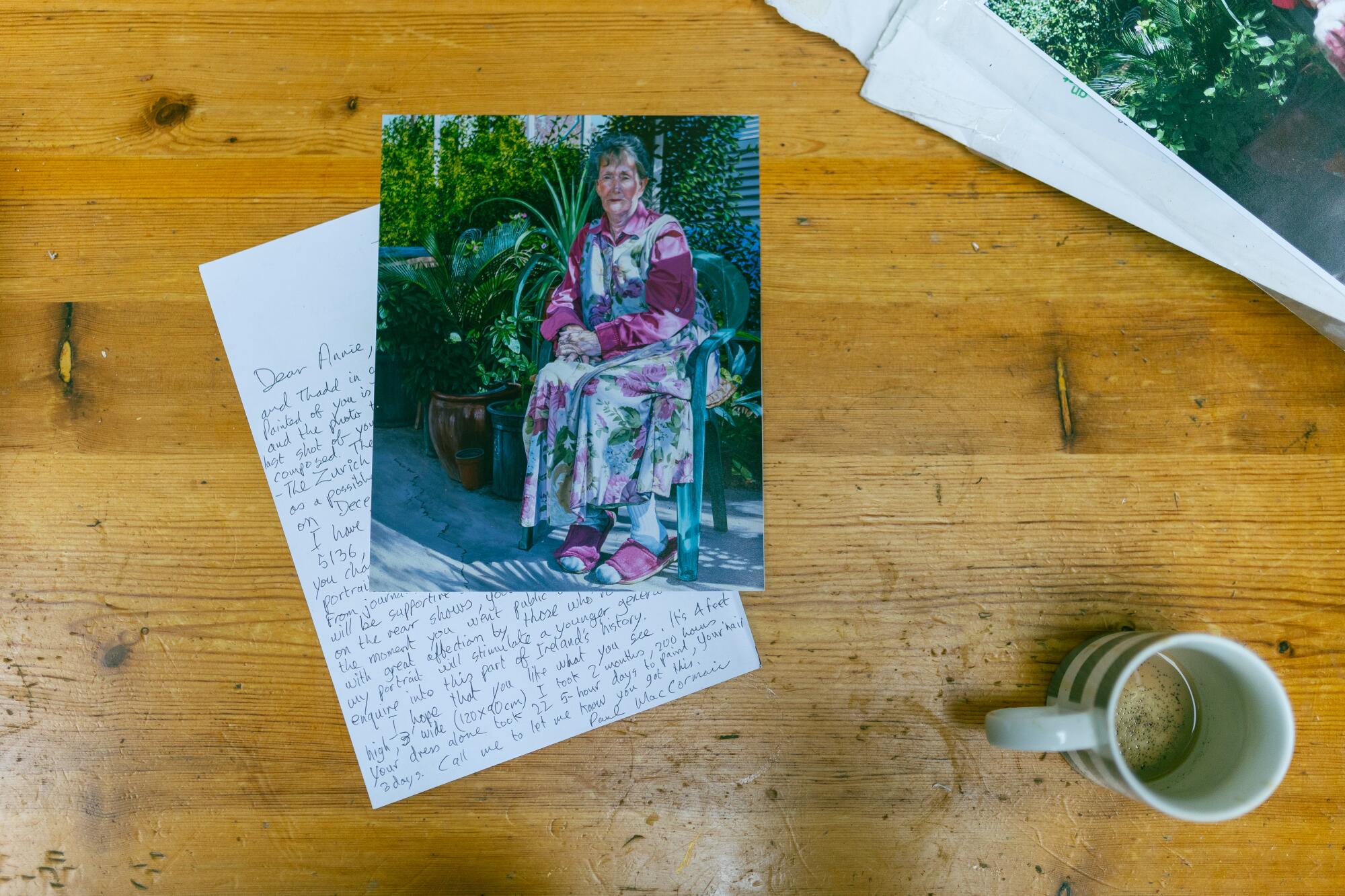
A printout of Annie Murphy’s portrait and a letter by artist Paul MacCormaic appear at his studio in Dublin. MacCormaic had sent the letter and printout to Murphy’s former home in Riverside, but it was returned.
(Molly Keane / For The Times)
O’Clery was dispatched to Connecticut to interview Murphy.
“It was evident the story was true. I … found her to be a slim woman of 43, attractive, composed, but full of outrage and nervous energy, and utterly convincing,” O’Clery wrote in a 2017 article.
The revelation of the bishop’s affair and son quickly spread to the front pages of newspapers across Ireland. Shortly thereafter, the Vatican announced that Casey had resigned as bishop of Galway but remained in the priesthood.
“I did what I had to do to bring him forward to his son,” she said of Casey in a recent interview with The Times. “Sometimes I felt I’d play any card I had to to do it and I didn’t care. I was a little bit bitter, maybe ruthless, maybe ambitious, maybe all those things.”
Yes, she said, she felt bad for the bishop, but that didn’t deter her. “I told him … if my son comes to you and you deny him … I will do anything I have to to bring you forth. If it means tearing you to pieces, I will.”
For Irish boomers and Gen Xers, the name Annie Murphy conjures a different time. When the story broke, the country’s laws barred contraception, homosexual acts, blasphemy and, with rare exceptions, abortion.
I was a little bit bitter, maybe ruthless, maybe ambitious, maybe all those things.
— Annie Murphy
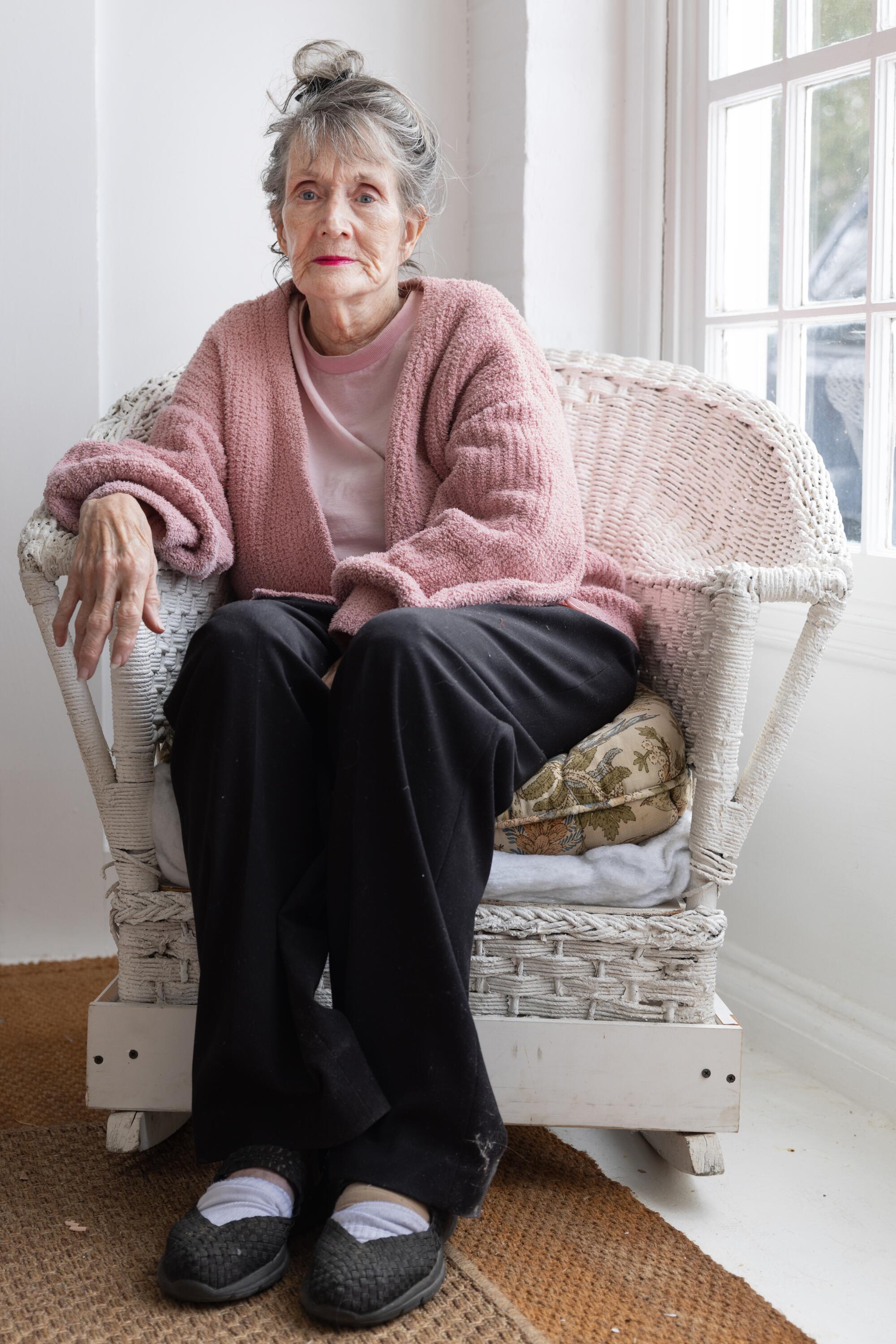
Annie Murphy, whose affair with a bishop changed attitudes in Ireland about the Catholic Church, now lives in New Lebanon, N.Y.
(Jessica Chappe / For The Times)
“The Catholic Church was still hugely influential in Ireland,” said Sarah-Anne Buckley, an associate professor of history at the University of Galway.
People of a certain age in Ireland remember the shocking outlines of a national scandal: the young American woman and the bishop, the hypocrisy of the clergyman, the baby born out of wedlock and without a present father, the woman’s notorious appearance on an Irish late night talk show.
“I just remember people of the generation ahead of me were literally speechless and wouldn’t have talked about it because it upset them so much. It went against everything they believed about the church,” said Cunningham, the history professor. He even recalls what he was doing when he heard about the affair: driving to Ballinamore in County Leitrim to do historical research at the county library.
“Everyone I met there that day wanted to talk about Bishop Casey,” Cunningham said. “He was bishop of Galway, but a well-known national figure.”
Murphy chronicled her affair and the subsequent cover-up in “Forbidden Fruit: The True Story of My Secret Love Affair With Ireland’s Most Powerful Bishop.” It was written with Catholic-priest-turned-author Peter de Rosa and released by Little, Brown & Co. in January 1993.
Murphy remembered landing in Ireland for her book tour that year and seeing young Irish people, many of them women, waiting for her plane. The greeting was warmer than she’d expected.
“I got off the plane and they asked me what did I do? And I said I helped take the oppressive boot of the Catholic Church off the throat of Ireland,” she said. “I said, ‘Don’t worry about me, worry about Ireland.’ ”
The rest of Ireland was not as welcoming to Murphy, an American who did not seem to fear or revere the church that held such sway on the island. As she traveled through the country, she heard people yelling crude things at her when they saw her on the street. She said she worried that someone might even try to kill her, but the the name-calling proved to be the worst of it.
The most talked about woman in Ireland today.
— Gay Byrne, talk show host, on Annie Murphy
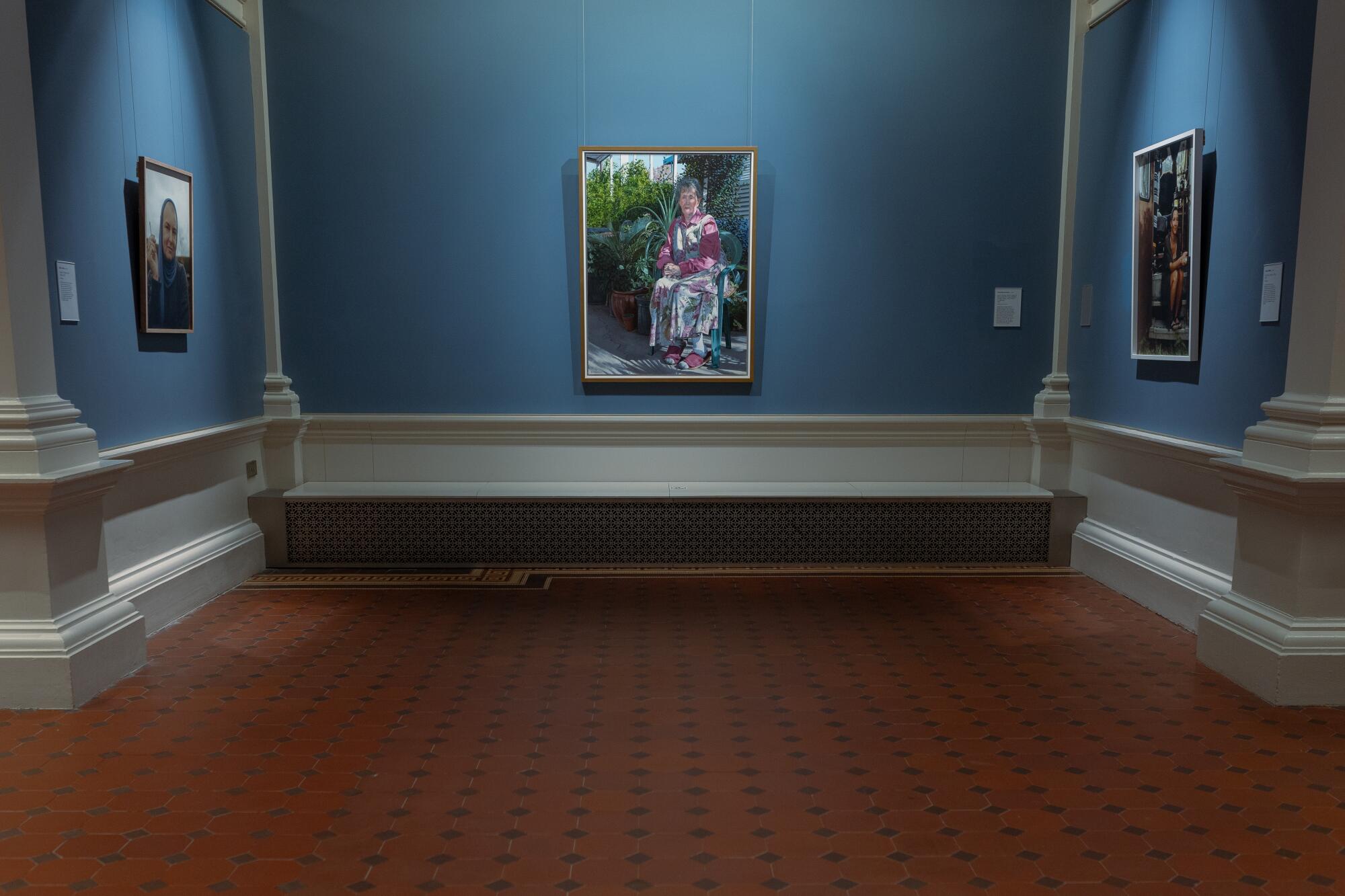
Paul MacCormaic’s portrait of Annie Murphy hangs at the National Gallery of Ireland in Dublin. To the left is a photograph of singer Sinéad O’Connor.
(Molly Keane / For The Times)
The signature event of the book tour came when Gay Byrne — the “undisputed leading figure in the history of Irish broadcasting,” according to the Irish Times — welcomed the 40-something Murphy to the stage for “The Late Late Show” and introduced her as “the most talked about woman in Ireland today.”
People who once knew Murphy and Casey packed the front row of the audience, waiting for their chance to be heard on the town-hall-style show. They peppered her with questions over minute details of her account of the affair with Casey — climaxing in a bizarre moment in which one friend of Casey claimed that Murphy lied in her book about the stage of the lunar cycle the night she and Casey conceived Peter. Murphy had written that there was a nearly full moon that night.
“The moon, in point of fact, was at its lowest ebb,” said Tom Flynn, in what he presumably felt was a “gotcha” moment.
Byrne at one point referred to Murphy as “coquetteish,” and chastised her for the amount of sex depicted in her book. He also suggested she was much more experienced than her clerical counterpart, who supposedly was bound by a vow of chastity, in matters of sex.
“I think she felt that Gay Byrne was not on her side, that Gay Byrne and many Irish people felt that she had taken advantage to some degree of an elderly man, although he was not much older than she,” said Peter McKay, a lawyer who represented Murphy at the time and traveled with her to Ireland in 1993. “There was an element of condescension in Gay Byrne’s attitude toward her that many in Ireland shared, the idea that she sort of waylaid the bishop.”
McKay remembered approaching Murphy during a break in the taping of the show and reminding her: “Be calm. Be dignified. Don’t let this man get the best of you in terms of temperament.”
At the end of the show, Byrne turned to Murphy and delivered a line that has been relitigated in the Irish press over and over for the next 30 years.

“Let’s end with a note and say, if your son is half as good a man as his father, he won’t be doing too badly,” Byrne said.
“I’m not so bad either, Mr. Byrne,” Murphy said, before standing and leaving the show without shaking the host’s hand. The audience applauded her quick retort.
The moment achieved late-night show immortality in Ireland. There are still Reddit threads dissecting it and articles in the Irish press about it. A YouTube clip of the episode has more than 300,000 views.
The scandal chipped away at the Catholic Church’s authority and, as one former president of Ireland put it, signaled the “beginning of the end” of deferential trust in the church.
These days, Murphy harbors no resentment toward Byrne, who she felt was just doing his job. She recognized that sharing her story would open herself up to extremely personal questions.
“I knew I walked into this and I had to accept the punches,” she said in her interview.
Among those with strong memories of Murphy’s late-night interview was the Irish painter Paul MacCormaic. A self-described feminist, MacCormaic was determined to paint Murphy as part of a portraiture project he titled “The Vanquished Writing History,” about people who had been overlooked or vilified and then crafted their own narratives. The scandal erupted so long ago — but so much had come to light since.
Finding her, however, was no easy task. Muprhy had remained largely out of the public eye since 1993, although she occasionally spoke with Irish reporters when news broke about Casey.
After he died in 2017 at age 89, it was revealed that four people had accused him of child sex abuse. One of them was a niece of Casey’s, who said he had raped her as a child. She reported it to Irish authorities years later, though no charges were ever filed. Another person who accused Casey of child sex abuse received a settlement.
“I’m shocked and saddened,” said Murphy in an interview with the Irish Independent. “They [the abuse survivors] have to be heard.”
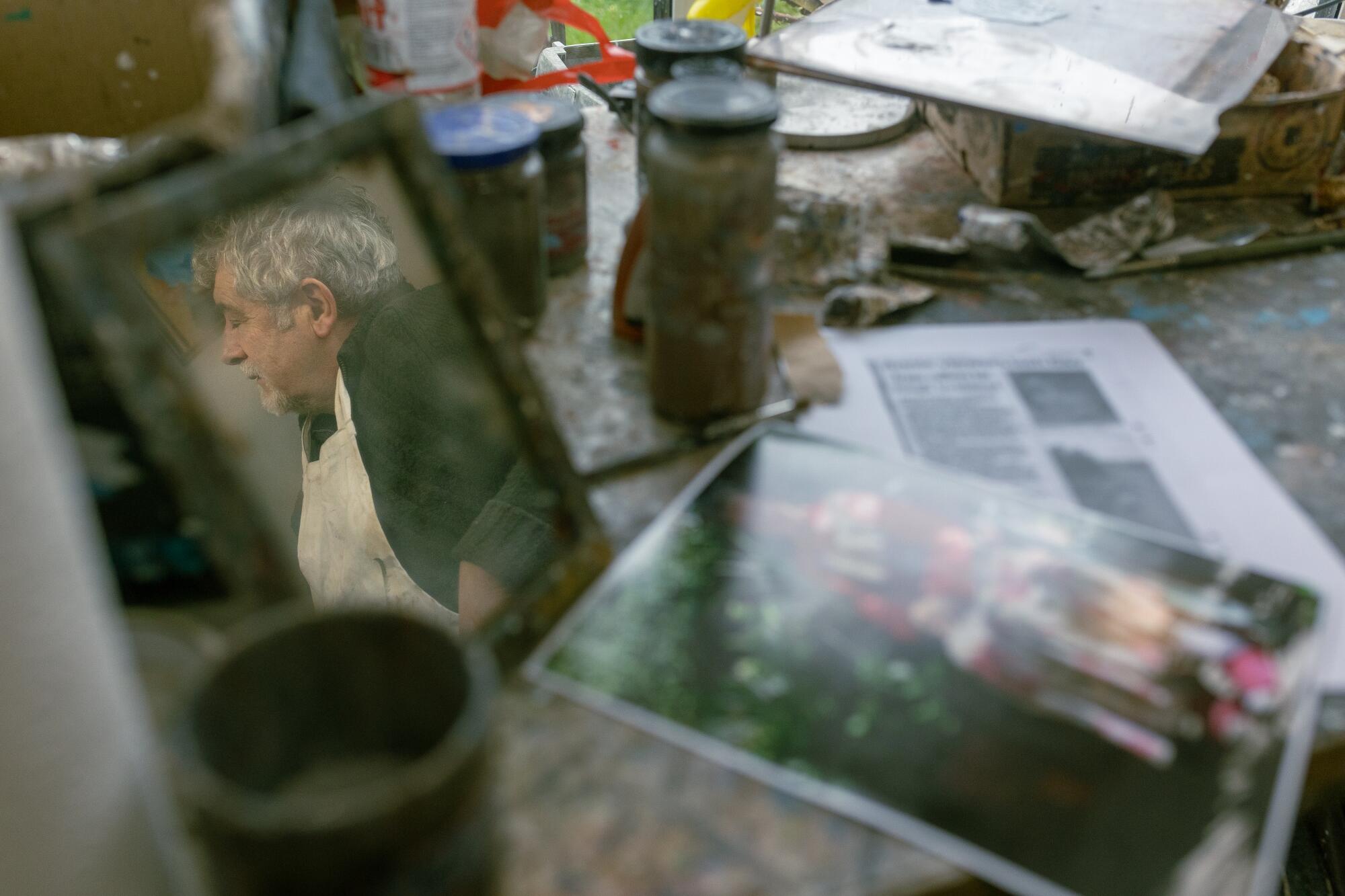
Artist Paul MacCormaic is reflected in a picture frame at his home studio in Dublin, Ireland.
(Molly Keane / For The Times)
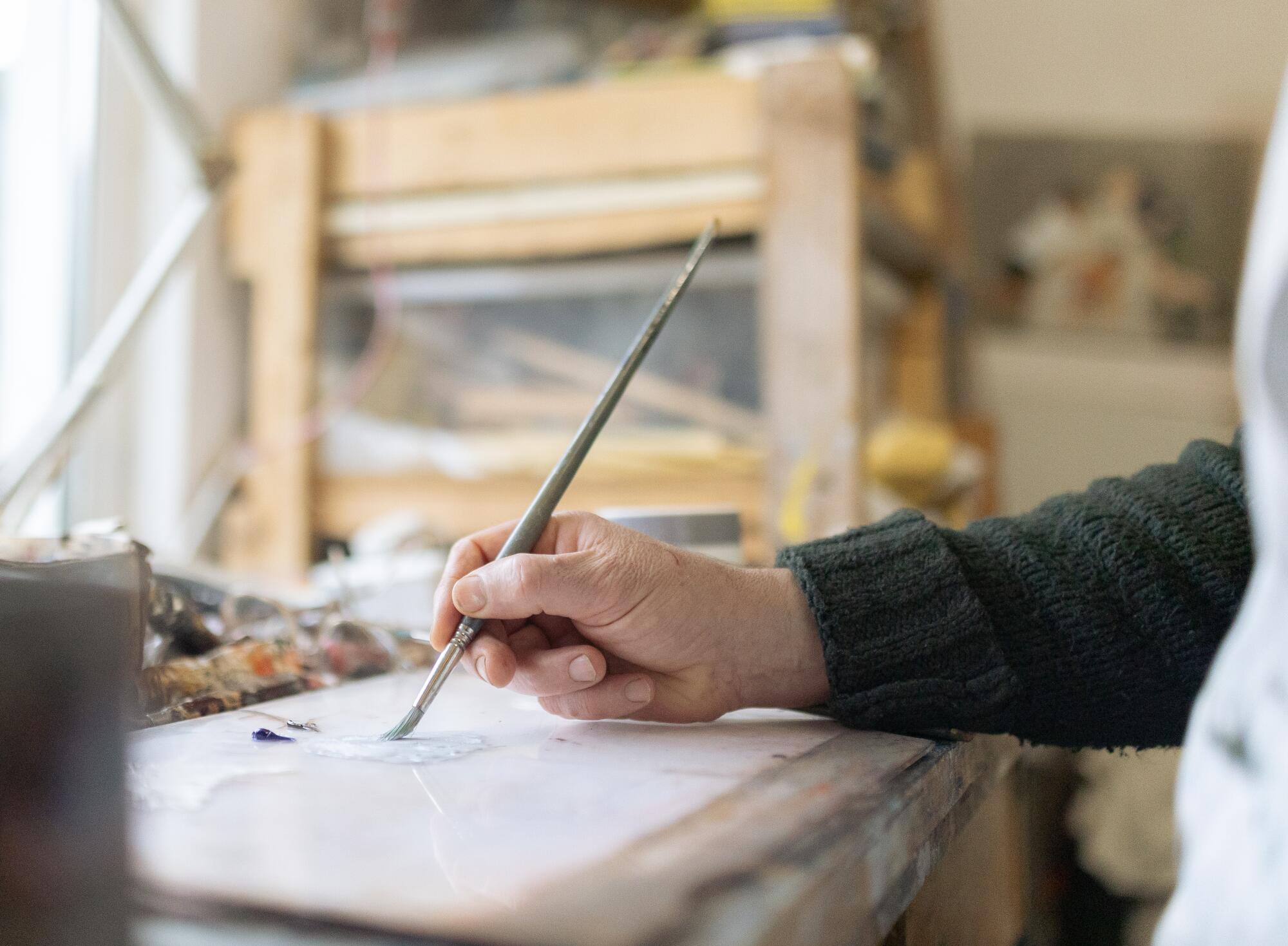
Artist Paul MacCormaic, at his home studio in Dublin, well remembered the story of Annie Murphy and her affair with a bishop. A self-described feminist, he decided to paint her portrait.
(Molly Keane / For The Times)
When MacCormaic began searching for Murphy, she had no cellphone and no email address, but he was finally able to contact her after learning the name of her husband, Thomas Heinchon, an American artist.
The two agreed that MacCormaic would come to California and take photos of Murphy in Riverside so he could paint her later. He visited in 2022.
“I photographed her at the trailer park she was living at. From what I can gather, she does not live in poverty but does not seem to have much spare cash,” he said.
MacCormaic entered her portrait into competition for the 2023 Zurich Portrait Prize. His piece was a finalist, meaning it was among a select few to be exhibited at the National Gallery, one of the premier art museums in Ireland.
MacCormaic tried to tell Murphy the good news but could not reach her.
The phone number he had for Murphy’s husband was no longer functioning. When he sent a letter to Riverside with a copy of the painting, it was returned with no forwarding address.
MacCormaic sought help finding her, and The Times tracked her down in New York state. That’s when she learned her picture was hanging in the National Gallery.
“I’d be a liar if I didn’t say I was kind of flattered,” she said.
You don’t hear much about Annie Murphy in California. You don’t hear anything, in fact.
Her story and the resignation of Casey merited a brief blurb in The Times in 1992, but the paper never mentioned her again.
Most neighbors in the mobile home park, where she lived until last year, had no idea about her story. One next door neighbor said she never even knew her name. Another neighbor’s jaw dropped when told Murphy’s story.
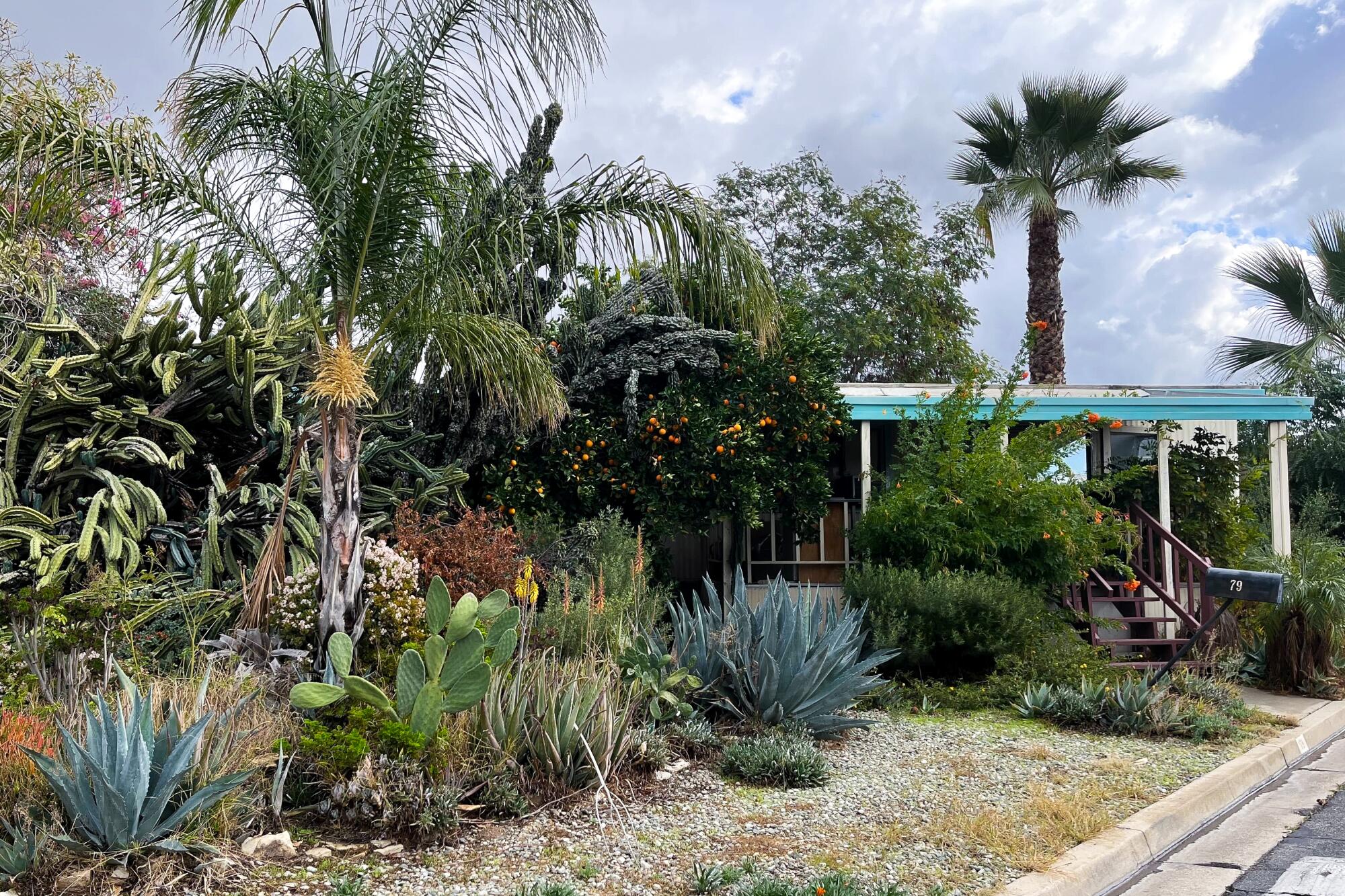
Annie Murphy’s former mobile home stands behind a shroud of cacti and other plants in Riverside. Murphy lived there with her husband until 2022.
(Noah Goldberg / Los Angeles Times)
Murphy’s former home in Riverside — once described by an Irish journalist as small and plain, with pale-blue curtains and a green carpet — is now boarded up and abandoned. The porch where she posed for MacCormaic is overgrown and strewn with trash.
Murphy appears to have disappeared in a hurry, and that’s exactly what her son Peter says is the case.
When her husband, Heinchon, died in 2023, Murphy was lost. Her son came to California and took his mother back east, moving her in with her sister in New Lebanon, N.Y.
Peter said it has been strange at times to be the product of a union so well known in another country. Living his whole life in the Boston area, which is sometimes called “the parish across the pond,” he said, he has has sometimes been recognized by strangers.
For instance, he was working in a restaurant in the 1990s with an “off the boat” Irishman. The man looked at Peter and dropped the rack of glasses he had been carrying.
“‘F— me, you’re Casey’s kid,’ ” Peter recalled the man saying.
Peter said his mother’s story should be better known by Americans.
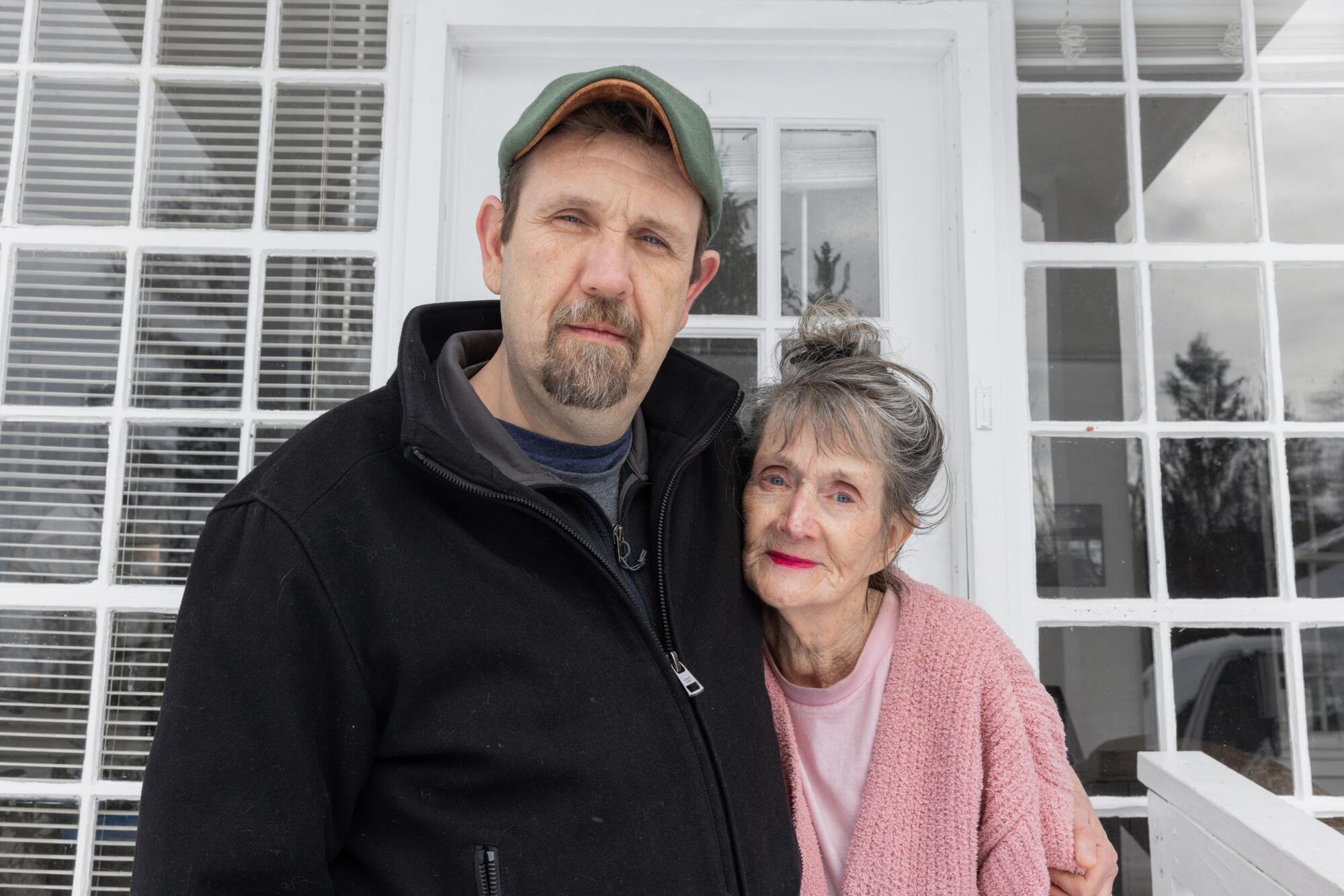
Annie Murphy, the woman whose portrait was painted by Paul MacCormaic, along with her son, Peter Murphy, at her home in New Lebanon, N.Y.
(Jessica Chappe / For The Times)
“People should know her strength. … She took on an institution thousands of years old. One of the wealthiest world institutions,” said Peter. “She’s an all-or-nothing lady. I would want people to know her courage and her humility.”
But for Murphy, the story is a defining moment — when she took on one of the loves of her life and brought him down, destroying his reputation out of a mother’s love for her son. The memories are fading, and a recent stroke wiped away many of the most distinct ones.
Can she recall the ocean breeze half a century ago coming into her room at the house in Kerry? The sound of Casey’s laugh as the two sat in front of the fire and talked about religion and trauma? The way she would chastise him for his dangerous driving but never actually felt unsafe in the car with him? It’s almost a different life.
Back in Riverside, there was one woman in the mobile-home park who knew who Murphy was. An older Irish immigrant, a Catholic. The woman wanted to talk with Murphy about the scandal, which she felt helped ease Ireland out of the Catholic Church’s grip.
“She thought it was a good thing,” Murphy said.
The two discussed the scandal, but Murphy did not want to speak about it too much. There were other things closer to home to speak about.
“I said, ‘Let’s get past it,’” Murphy recalled. “I let it go. It was what it was.”
